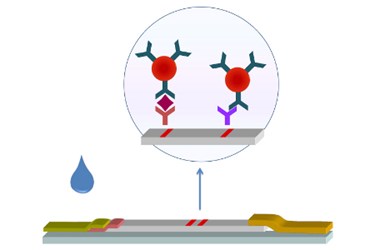Scientists Develop Paper-based Test For Morphine, Potential Use In Diagnostics

A Finnish research team has developed a morphine test that can be ink-jet printed on paper. The researchers claim that their technology is cost-effective, portable, and could also be developed as a test for other narcotics or for use in medical diagnostics.
The lateral flow diagnostic assay designed at VTT Technical Research Centre of Finland uses two layers of antigen-binding fragments (Fab fragments) of antibodies and gold nanoparticles to form a direct sandwich assay pattern. These Fab fragments cling to the morphine particles as they flow past and produce a visible reaction. The team used nitrocellulose, a popularly used diagnostic substrate, as a reference material.
In a study published in Analytical & Bioanalytical Chemistry, the researchers noted, “Under optimized conditions, a visually assessed limit of detection for the sandwich assay was 1 ng/mL, indicating that the paper-based test devices developed in this work can perform screening for drugs of abuse and can fulfill the requirements for a sensitive assay in diagnostically relevant ranges.”
In 2010, the VTT team introduced similar technology that was able to detect the presence of hemoglobin in a clinical sample. Tomi Erho, principal scientist at VTT, said in a recent press release that his team wanted to find a more difficult target for the technology’s next development.
“Through our continued development efforts, we wanted to confirm that the method also works in mass-production of more demanding tests. Morphine as a small-sized molecule places major requirements on the analytical performance of the test,” said Erho.
Erho commented that the results of the morphine study prove the test is viable for use in many different applications and may be developed to test for several different drugs simultaneously.
Paper-based diagnostic products are a growing trend in diagnostics because they are simple and affordable to mass produce, and they are biodegradable. Experts say these tests are ideal for use in regions with limited technological resources or for point-of-care (POC) services such as workplace testing, traffic stops, or home test kits.
Last month, Med Device Online reported that a team at MIT had developed a paper-based Ebola test that can offer POC diagnosis in less than 10 minutes.
Image credit: VTT Technical Research Centre of Finland
